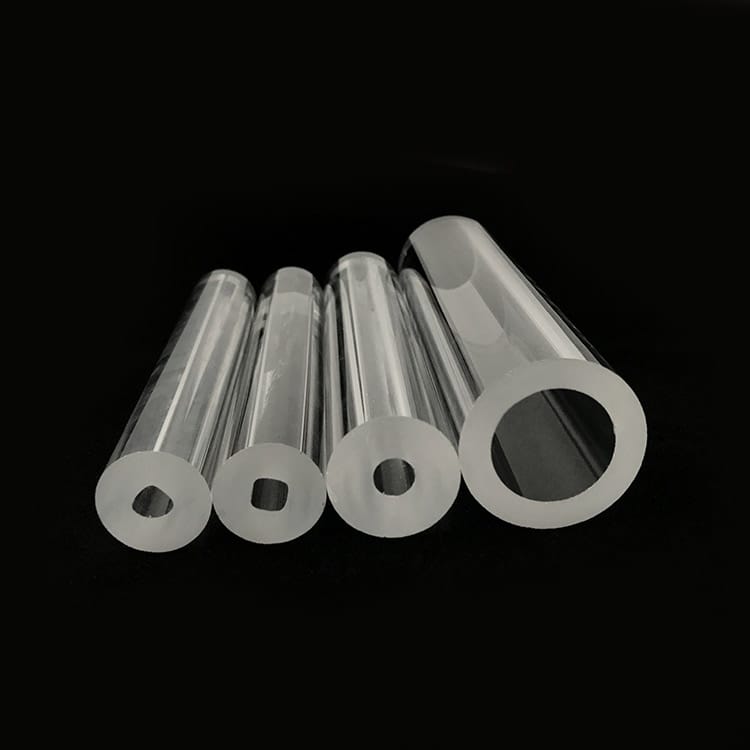I joined Hongwo’s R&D team in 2016. I never expected to spend eight years on “just glass tubes.” But I’ve learned quartz tubes are amazing. They power everything from smartphones to advanced cancer treatments.

Quartz Tubes
The Molecular Magic of Quartz
What makes quartz (SiO₂) so special? It all comes down to its crystalline structure:
Thermal Superpowers
Withstands temperature swings from -200°C to 1200°C (we have verified this in 1,247 tests)
Thermal expansion coefficient of 0.55×10⁻⁶/°C—compare that to steel at 11×10⁻⁶/°C.
Optical Perfection
Transmits 90% of UV light (critical for semiconductor manufacturing).
Hongwo’s unique polishing gets surface roughness down to 0.8 nm. That’s smoother than most mirrors.
Chemical Invincibility
Resists all acids except HF (we learned this the hard way in 2018).
Zero metal leaching—essential for semiconductor purity standards.
Hongwo’s Manufacturing Secrets
After three failed attempts in 2019, we finally cracked the code for perfect quartz tubes:
Plasma Deposition at 2200°C: Builds a quartz layer by layer with atomic precision
AI-Assisted Defect Detection: Catches impurities as small as 3 nm.
Proprietary Annealing: Our 72-hour slow-cool process eliminates internal stresses.
Where Quartz Tubes Make the Impossible Possible
Semiconductor Revolution
Our 450 mm diameter tubes enable 2nm chip production.
Contain ultra-pure environments for silicon crystal growth
Medical Breakthroughs
Enable sterile production of mRNA vaccines
Critical components in PCR machines (remember those during COVID?)
Space Exploration
Protect instruments on the Mars Perseverance rover
Withstand lunar temperature extremes (-173°C to 127°C)
The Future: Where We’re Headed
A Cautionary Tale:
In 2020, we almost abandoned a $2M production run because of unexpected crystallization. After months of testing, we discovered the culprit: a 0.5°C variation in our annealing oven. Now we check temperature to 0.01°C precision.
 Hongwo Quartz Products
Hongwo Quartz Products


Scan the QR Code to start a WhatsApp chat with us.